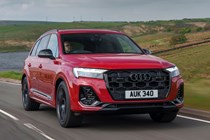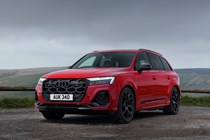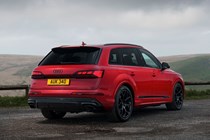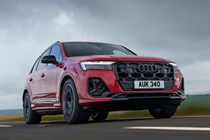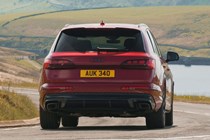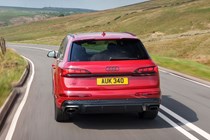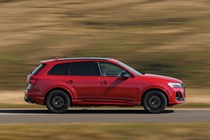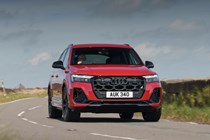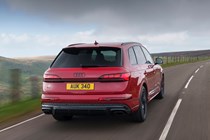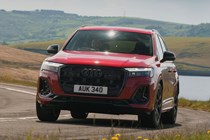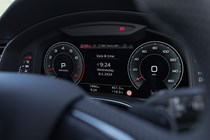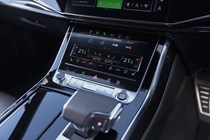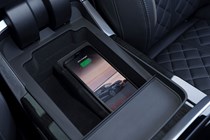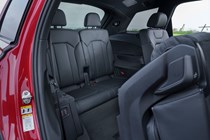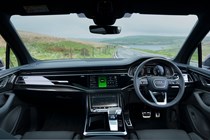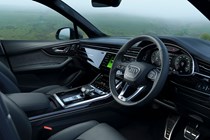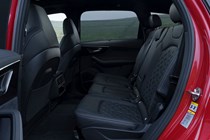Audi Q7 running costs and reliability

Miles per pound (mpp)
| Petrol engines | 3.3 - 4.1 mpp |
|---|---|
| Diesel engines | 3.8 - 4.6 mpp |
| Plug-in hybrid petrol engines * | 4.0 - 4.1 mpp |
| Plug-in hybrid diesel engines * | N/A |
Fuel economy
| Petrol engines | 22.4 - 27.7 mpg |
|---|---|
| Diesel engines | 29.4 - 35.8 mpg |
| Plug-in hybrid petrol engines * | 27.2 - 28.2 mpg |
| Plug-in hybrid diesel engines * | N/A |
- Not cheap to service or maintain – like all Audis
- V6 diesels will offer lowest running costs
- SQ7 TDI costs most to run, but retains more value too
What are the running costs?
Have we mentioned the Q7 is a big car yet? Well, it is – and it isn’t cheap to run. You can stack the deck in your favour by picking the correct engine, though.
Go for one of the diesels if you want the lowest running costs. Both the entry-level 45 TDI and 50 TDI have official WLTP fuel economy figures of between 34–35.8mpg. During our time test of the 50 TDI, we averaged 33mpg on a motorway cruise, although that figure dropped quite quickly once we were back on narrower roads.
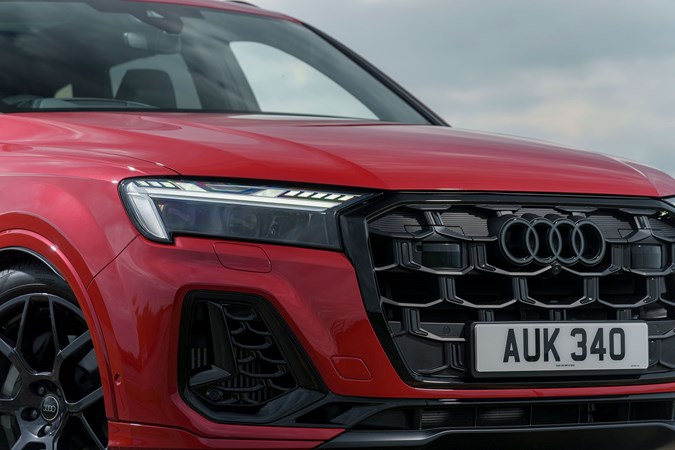
The 55 TFSI was quite inefficient. We averaged just over 20mpg over almost 800 miles, which is some way behind the 26.4–27.4 mpg Audi reckons we should have been getting. However, this is quite a small and revvy engine for such a big car. To get the best out of it, you need to work it hard – and that cripples your fuel economy.
Surprisingly, we found the V8-powered SQ7 to be more efficient than it V6-engined sister. We reckon that’s because we didn’t need to thrash it as hard. On a long motorway cruise, one of our testers averaged more than 28mpg.
Residual values are strong across the range, but it’s the SQ7 that performs best in this respect, retaining 62% of its value after three years and 60,000 miles. All Q7s retain better than 50%, however. Audi’s servicing and maintenance is also known to be reassuringly expensive, though.
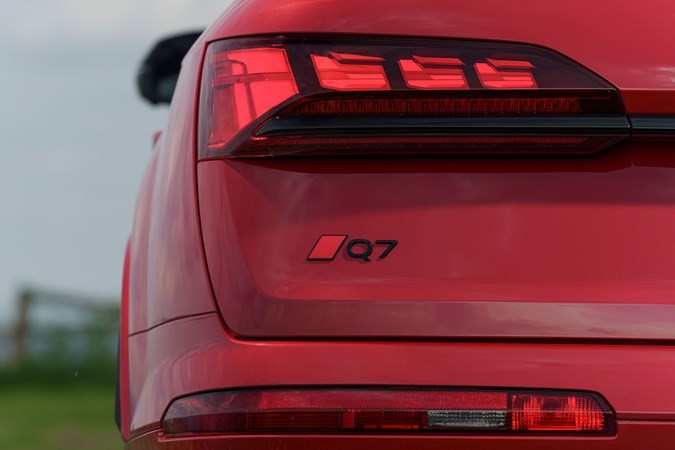
The plug-in hybrid TFSI e is the most efficient version of the Q7 on paper. Audi says it can muster as much as 135.4mpg. That’s completely unrealistic in the real world unless you’re relying on the electric motor alone, going everywhere 20 miles at a time. Still, if you charge it up regularly, you should see savings over both the standard petrol Q7s.
It takes approximately eight hours to charge the battery using a three-pin plug or 2hrs 30mins with a 7.4kW wall box.
Reliability
- Common Audi parts should be reliable
- Some newer tech has been patchy
- Four recalls but cars will have been fixed
The Q7 is built using parts from other Audi products, so it should prove to be reliable. When the car was facelifted the first time, we heard reports of its digital gauge cluster suffering from electrical gremlins. Audi has fixed that for this latest model, though.
The 48-volt electrical system in the old plug-in hybrid E-Tron caused Audi to take it off sale for a short period after launch to be rectified, but this newer system has been implemented in the A6, A7 and A8 since then and is much more reliable.
There have also been four official DVSA recalls, but all cars should have had these faults fixed.
Ongoing running costs
| Road tax | £20 - £620 |
|---|---|
| Insurance group | 35 - 50 |
Get an insurance quote with

|
|


